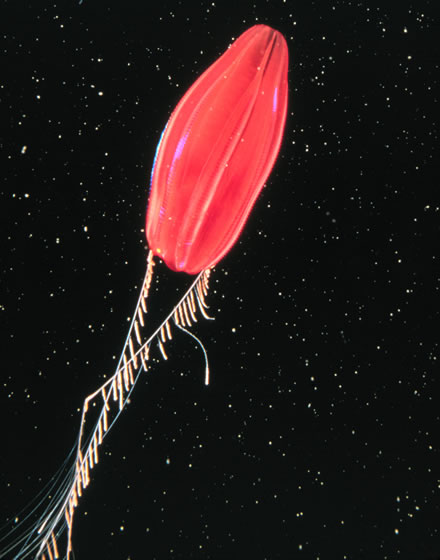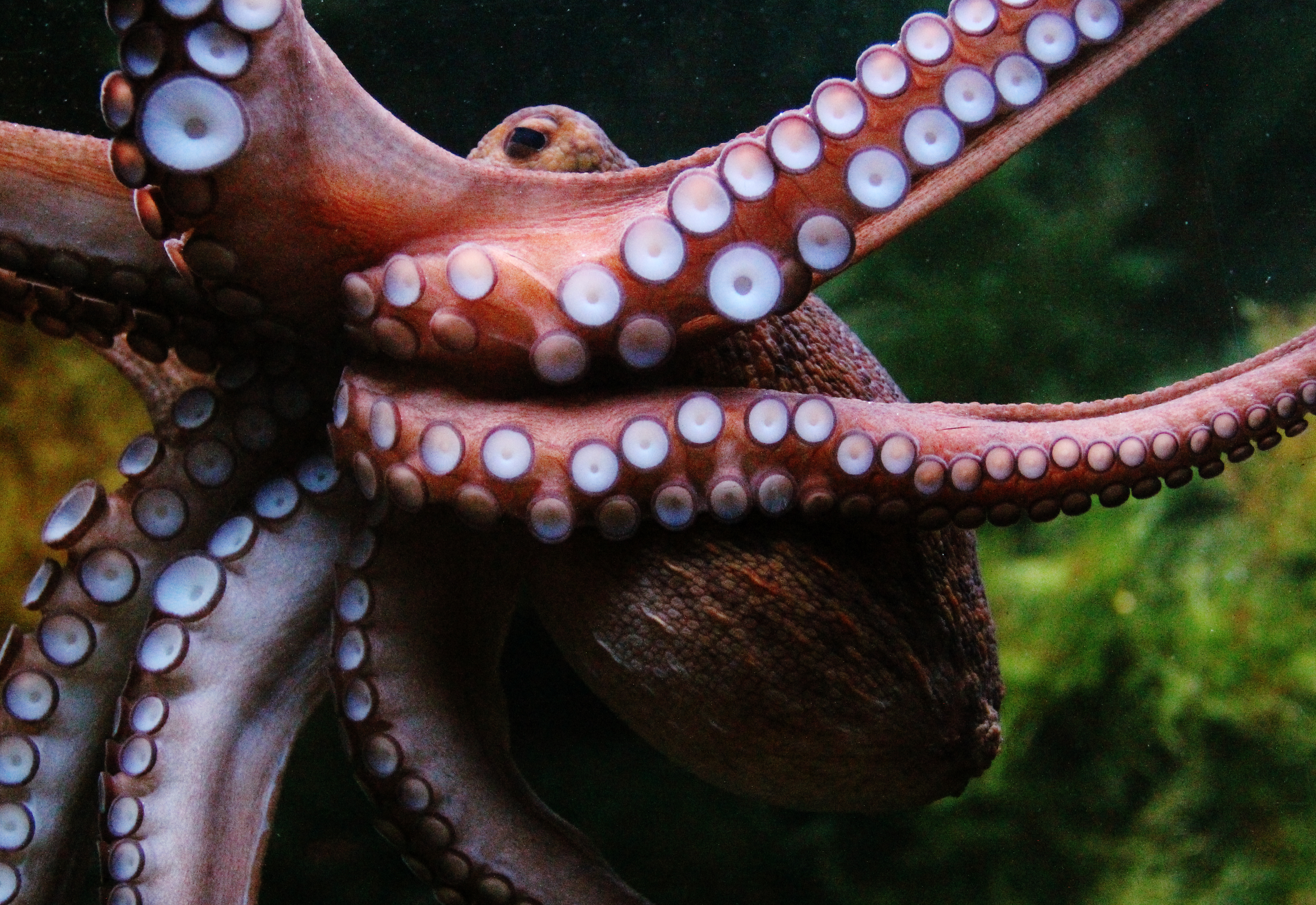|
Sepiida
Cuttlefish, or cuttles, are marine molluscs of the suborder Sepiina. They belong to the class Cephalopoda which also includes squid, octopuses, and nautiluses. Cuttlefish have a unique internal shell, the cuttlebone, which is used for control of buoyancy. Cuttlefish have large, W-shaped pupils, eight arms, and two tentacles furnished with denticulated suckers, with which they secure their prey. They generally range in size from , with the largest species, the giant cuttlefish (''Sepia apama''), reaching in mantle length and over in mass. Cuttlefish eat small molluscs, crabs, shrimp, fish, octopuses, worms, and other cuttlefish. Their predators include dolphins, larger fish (including sharks), seals, seabirds, and other cuttlefish. The typical life expectancy of a cuttlefish is about 1–2 years. Studies are said to indicate cuttlefish to be among the most intelligent invertebrates. [...More Info...] [...Related Items...] OR: [Wikipedia] [Google] [Baidu] |
Sepiidae
Sepiidae is a family of cephalopods in the order Sepiida, comprising the large-bodied species of cuttlefish, including the type genus, '' Sepia''. It includes 116 recognized species according to WoRMS, a number of which need further verification. A 2023 paper revived several genera and elevated some subgenera to full genus level; this classification scheme has been accepted by WoRMS. As a consequence, multiple species have been split out of genus ''Sepia'', many of them assigned to revived genera. Classification *Order Sepiida: cuttlefish **Suborder Sepiolina ***Family Sepiadariidae **Suborder Sepiina ***Family Sepiidae ****Genus '' Acanthosepion'' *****'' Acanthosepion aculeata'', needle cuttlefish (type) *****'' Acanthosepion elliptica,'' ovalbone cuttlefish *****'' Sepia esculenta'', golden cuttlefish *****'' Sepia lycidas'', kisslip cuttlefish *****'' Acanthosepion pharaonis'', Pharaoh cuttlefish *****'' Acanthosepion ramani'' *****'' Acanthosepion recurvirostra'', cu ... [...More Info...] [...Related Items...] OR: [Wikipedia] [Google] [Baidu] |
Cephalopod Size
Cephalopods, which include squids and octopuses, vary enormously in size. The smallest are only about long and weigh less than at maturity, while the giant squid can exceed in length and the colossal squid weighs close to half a tonne (), making them the largest living invertebrates. Living species range in mass more than three-billion-fold, or across nine orders of magnitude, from the lightest hatchlings to the heaviest adults. Certain cephalopod species are also noted for having #Anatomical superlatives, individual body parts of exceptional size.#Nilssonetal2012, Nilsson ''et al.'', 2012:683 Cephalopods were at one time the largest organism, largest of all organisms on Earth, and numerous species of comparable size to the largest present day squids are known from the fossil record, including enormous examples of ammonoids, belemnoids, nautiloids, orthoceratoids, teuthids, and vampyromorphids. In terms of mass, the largest of all known cephalopods were likely the giant shelled ... [...More Info...] [...Related Items...] OR: [Wikipedia] [Google] [Baidu] |
Squid
A squid (: squid) is a mollusc with an elongated soft body, large eyes, eight cephalopod limb, arms, and two tentacles in the orders Myopsida, Oegopsida, and Bathyteuthida (though many other molluscs within the broader Neocoleoidea are also called ''squid'' despite not strictly fitting these criteria). Like all other cephalopods, squid have a distinct head, Symmetry (biology)#Bilateral symmetry, bilateral symmetry, and a mantle (mollusc), mantle. They are mainly soft-bodied, like octopuses, but have a small internal skeleton in the form of a rod-like gladius (cephalopod), gladius or pen, made of chitin. Squid diverged from other cephalopods during the Jurassic and occupy a similar Ecological niche, role to teleost fish as open-water predators of similar size and behaviour. They play an important role in the open-water food web. The two long tentacles are used to grab prey and the eight arms to hold and control it. The beak then cuts the food into suitable size chunks for swal ... [...More Info...] [...Related Items...] OR: [Wikipedia] [Google] [Baidu] |
Cuttlebone
Cuttlebone, also known as cuttlefish bone, is a hard, brittle internal structure (an internal Mollusc shell, shell) found in all members of the family (biology), family Sepiidae, commonly known as cuttlefish, within the cephalopods. In other cephalopod families it is called a Gladius (cephalopod), ''gladius''. Cuttlebone is composed primarily of aragonite. It is a chambered structure that the animal can fill with gas or liquid for buoyancy control. On the ventral (bottom) side of the cuttlebone is the highly modified siphuncle; this is the organ with which the cuttlebone is filled with gas or liquid. The microscopic structure of cuttlebone consists of narrow layers connected by numerous upright pillars. Depending on the species, cuttlebones implosion (mechanical process), implode at a depth of . Because of this limitation, most species of cuttlefish live on the seafloor in shallow water, usually on a continental shelf. When the cuttlefish dies, only the cuttlebone remains ... [...More Info...] [...Related Items...] OR: [Wikipedia] [Google] [Baidu] |
Giant Cuttlefish
The giant cuttlefish (''Ascarosepion apama''), also known as the Australian giant cuttlefish, is the world's largest cuttlefish species, growing to in mantle (mollusc), mantle length and up to in total length (total length meaning the whole length of the body including outstretched tentacles). They can weigh over . Like all cuttlefish species, the giant cuttlefish has eight arms and two feeding tentacles, as well as blue blood and three hearts. Using cells known as chromatophores, the cuttlefish can put on spectacular displays, changing colour in an instant. The giant cuttlefish is native to temperate and subtropical waters of Australia, from Brisbane in Queensland to Shark Bay in Western Australia and Tasmania to the south. It occurs on rocky reefs, seagrass beds, and sand and mud seafloor to a depth of . In 2009 the species was listed at Near Threatened on the IUCN Red List of Threatened Species due to an observed declining trend at that time. Lifecycle and reproduction Gia ... [...More Info...] [...Related Items...] OR: [Wikipedia] [Google] [Baidu] |
Cephalopod
A cephalopod is any member of the molluscan Taxonomic rank, class Cephalopoda (Greek language, Greek plural , ; "head-feet") such as a squid, octopus, cuttlefish, or nautilus. These exclusively marine animals are characterized by bilateral symmetry, bilateral body symmetry, a prominent head, and a set of cephalopod arm, arms or tentacles (muscular hydrostats) modified from the primitive molluscan foot. Fishers sometimes call cephalopods "inkfish", referring to their common ability to squirt Cephalopod ink, ink. The study of cephalopods is a branch of malacology known as teuthology. Cephalopods became dominant during the Ordovician period, represented by primitive nautiloids. The class now contains two, only distantly related, Extant taxon, extant subclasses: Coleoidea, which includes octopuses, squid, and cuttlefish; and Nautiloidea, represented by ''Nautilus (genus), Nautilus'' and ''Allonautilus''. In the Coleoidea, the molluscan shell has been internalized or is absent, where ... [...More Info...] [...Related Items...] OR: [Wikipedia] [Google] [Baidu] |
Belosaepiidae
Belosaepiidae is an extinct, monospecific family of cephalopods known from the Eocene epoch, and bearing close similarity to the sepiid cuttlefish, whilst retaining the remnants of a belemnite Belemnitida (or belemnites) is an extinct order (biology), order of squid-like cephalopods that existed from the Late Triassic to Late Cretaceous (And possibly the Eocene). Unlike squid, belemnites had an internal skeleton that made up the cone ...-like guard. Seagrass Importance To Belosaepiidae A faunal collection has been found that contains Belosaepiidae and Sepiidae, suggesting that they are likely to have originated from a seagrass environment in the past. As there was a lack of seagrass overtime in the North Atlantic during the late Eocene period, a particular species called belosaepiid went extinct within the family belosipiidae. References Eocene molluscs {{cuttlefish-stub ... [...More Info...] [...Related Items...] OR: [Wikipedia] [Google] [Baidu] |
Sepiadariidae
Sepiadariidae is a family of coleoid cephalopods in the order Sepiida Cuttlefish, or cuttles, are marine molluscs of the suborder Sepiina. They belong to the class Cephalopoda which also includes squid, octopuses, and nautiluses. Cuttlefish have a unique internal shell, the cuttlebone, which is used for control .... Classification * Genus '' Sepiadarium'' ** '' Sepiadarium auritum'' ** '' Sepiadarium austrinum'', southern bottletail squid ** '' Sepiadarium gracilis'' ** '' Sepiadarium kochi'', tropical bottletail squid ** '' Sepiadarium nipponianum'' * Genus '' Sepioloidea'' ** '' Sepioloidea lineolata'', striped pyjama squid ** '' Sepioloidea magna''Reid A. (2009)''Sepioloidea magna'' sp. nov.: a new bottletail squid (Cephalopoda: Sepiadariidae) from northern Australia ''The Beagle, Records of the Museums and Art Galleries of the Northern Territory'' 25: 103–109Archivedat archive.org ** '' Sepioloidea pacifica'', Pacific bobtail squid References External links ... [...More Info...] [...Related Items...] OR: [Wikipedia] [Google] [Baidu] |
Cephalopod Arm
All cephalopods possess flexible limbs extending from their heads and surrounding their beaks. These appendages, which function as muscular hydrostats, have been variously termed arms, legs or tentacles. Description In the scientific literature, a cephalopod ''arm'' is often treated as distinct from a ''tentacle'', though the terms are sometimes used interchangeably, often with the latter acting as an umbrella term for cephalopod limbs. Generally, arms have suckers along most of their length, as opposed to tentacles, which have suckers only near their ends.Young, R.E., M. Vecchione & K.M. Mangold 1999Cephalopoda Glossary Tree of Life web project. Barring a few exceptions, octopuses have eight arms and no tentacles, while squid and cuttlefish have eight arms (or two "legs" and six "arms") and two tentacles.Norman, M. 2000. ''Cephalopods: A World Guide''. ConchBooks, Hackenheim. p. 15. "There is some confusion around the terms ''arms'' versus ''tentacles''. The numerous l ... [...More Info...] [...Related Items...] OR: [Wikipedia] [Google] [Baidu] |
Tentacle
In zoology, a tentacle is a flexible, mobile, and elongated organ present in some species of animals, most of them invertebrates. In animal anatomy, tentacles usually occur in one or more pairs. Anatomically, the tentacles of animals work mainly like muscular hydrostats. Most forms of tentacles are used for grasping and feeding. Many are sensory organs, variously receptive to touch, vision, or to the smell or taste of particular foods or threats. Examples of such tentacles are the eyestalks of various kinds of snails. Some kinds of tentacles have both sensory and manipulatory functions. A tentacle is similar to a cirrus, but a cirrus is an organ that usually lacks the tentacle's strength, size, flexibility, or sensitivity. A nautilus has cirri, but a squid has tentacles. Invertebrates Molluscs Many molluscs have tentacles of one form or another. The most familiar are those of the pulmonate land snails, which usually have two sets of tentacles on the head: when ext ... [...More Info...] [...Related Items...] OR: [Wikipedia] [Google] [Baidu] |
Cephalopod Intelligence
Cephalopod intelligence is a measure of the cognitive ability of the cephalopod class of molluscs. Intelligence is generally defined as the process of acquiring, storing, retrieving, combining, and comparing information and skills. Though these criteria are difficult to measure in nonhuman animals, cephalopods are the most intelligent invertebrates. The study of cephalopod intelligence also has an important comparative aspect in the broader understanding of animal cognition because it relies on a nervous system that is fundamentally different from that of vertebrates. In particular, the Coleoidea subclass (cuttlefish, squid, and octopuses) is thought to contain the most intelligent invertebrates. It is also thought to be an important example of advanced cognitive evolution in animals, though nautilus intelligence is also a subject of growing interest among zoologists. The scope of cephalopod intelligence and learning capability is controversial within the biological community, ... [...More Info...] [...Related Items...] OR: [Wikipedia] [Google] [Baidu] |








